Easily, attract pollinators to your gardens with this guide!
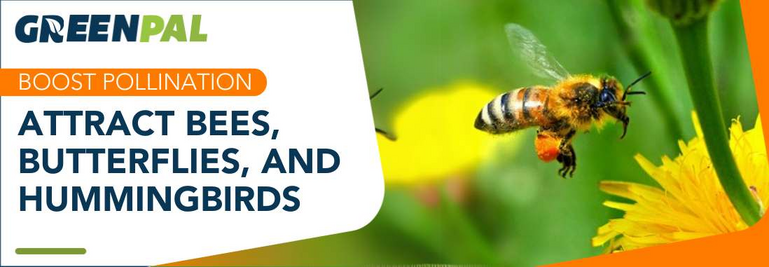
We all know that pollinators are an essential part of everyday life.
In fact, Einstein once said that if bees disappeared, humanity would soon follow.
Well, bees are disappearing quickly.
Thankfully the rate of colony collapse has slowed, but the number of populations is still low.
Nonetheless, you can help attract pollinators to your lawn, and help them make a come back!
Sound like a plan? Then let’s make it happen with these easy to follow steps!
Only You Can Reestablish the Pollinators
It’s true, you can do your part to help pollinators by creating a pollinator-friendly garden in your very own yard.
It’s easy too!
Pollinators such as honeybees and bumblebees are vitally important to our local ecosystems.
In fact, in the United States alone, bees and their pollination are responsible for more than $16 billion annually. This is crazy but one third of the food supply of North America comes from plants that require insects to pollinate them.
So, how do you attract pollinators to your yard?
Well, keep reading for some great tips!
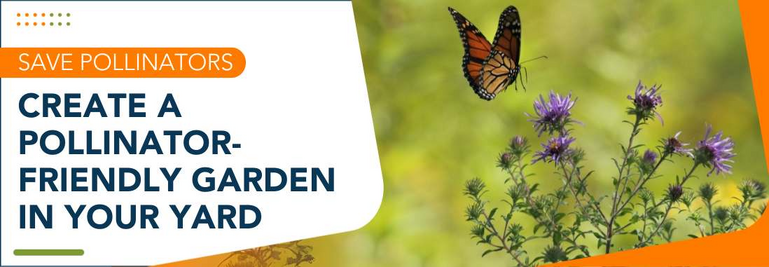
Five Tips to Attract Pollinators
Look, if you want to help pollinators, and attract some of the prettiest bugs around (not that there is much competition).
Then you should check out these steps to attract more pollinators:
Step 1 for Attracting Pollinators:
The first step to helping out the pollinators is, don't use pesticides in your yard. This is one of the biggest reasons bees are disappearing. Pesticide use on farms, household gardens and greenhouses has done a lot of damage.
If you need some natural pest control, then be sure to check out this pest control guide.
Step 2 for Attracting Pollinators:
Second, plant plants which need to be pollinated. This will attract a population of bees to your yard to pollinate them. In turn this will end up helping their hives thrive and survive.
Too often people choose to have the sterile lawn look.
Think about it, you can have a look that is so much better with pollinating plants. Some of the best flowers to plant are those that bloom for the entire season, not just for a couple of weeks.
In my experience, pollinators are attracted to the most visually attractive plants. They just have good taste. The bees, not the flowers.
You can see some great pollinators in our guide to creating a pollinator sanctuary.
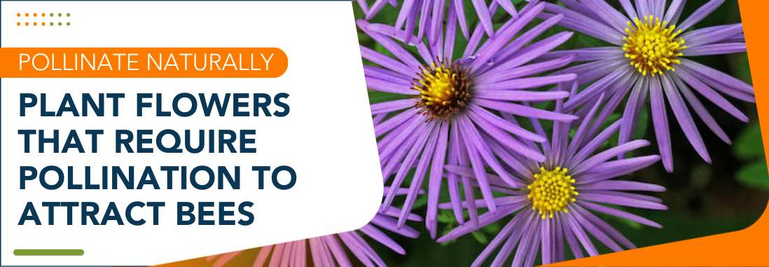
Step 3 for Attracting Pollinators:
Plant nectar-rich flowers. Nectar-rich flowers will not only attract bees and butterflies but hummingbirds as well!
And who doesn’t love the rare presence of a hummingbird?
Step 4 for Attracting Pollinators:
Include larval host plants for butterflies. Such as milkweed for monarchs.
This will help create a wonderful ecosystem in your yard. And within just a few years you will notice an increased presence in butterflies. Along with those butterflies will come birds, and all sorts of other amazing creatures.
Best of all, the increased presence of birds will leave your cats entertained for hours! Which is much better than their current role of eating grass and leaving it throughout your household.
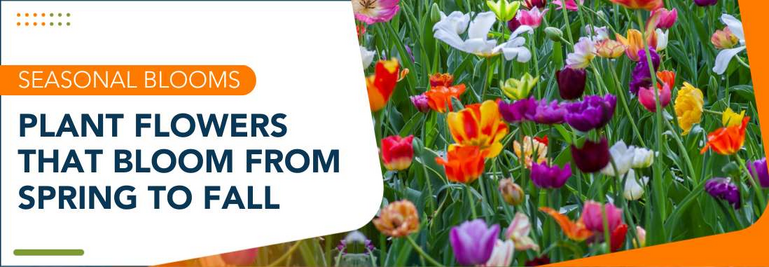
Step 5 for Attracting Pollinators:
Plant a diverse array of plant species that bloom from spring to fall.
Not just one kind of plant in your yard.
Here’s the deal, having some good pollinating plants in your yard will not only attract bees, it will help your yard look better.
Best of all, the yard will smell wonderful and you will have the hum of bees in your yard. You will also bee doing your part to help the bee population! There are many strategies to attract pollinators. But planting a diverse array of plants will surly attract many types of pollinators to your landscape.
Benefits of Attracting Pollinators
Here's a quick look at the key benefits of welcoming these vital creatures into your space:
Benefit | Description |
|---|---|
Eco-system Support | Pollinators are crucial for the health of local ecosystems and for the pollination of many plants, including those that contribute significantly to food supplies. |
Enhanced Garden Aesthetics | Pollinator-friendly gardens are visually appealing and can offer a diverse range of colors and shapes through various plant species. |
Wildlife Diversity | Attracting pollinators increases overall garden biodiversity, encouraging a healthy balance of wildlife including birds and other beneficial insects. |
Natural Pest Control | A healthy ecosystem with diverse pollinators can help manage pest populations naturally, reducing the need for chemical interventions. |
Frequently Asked Questions
Which plants are most attractive to butterflies?
Butterflies are particularly drawn to specific types of flowers and colors. Here’s what you need to know:
- Flower Types:
- Flattopped Blooms: Butterflies favor flowers with flat tops, such as Zinnias.
- Clustered Tubular Flowers: Short tubular flowers like Butterfly weed are also highly attractive to butterflies.
2. Flower Colors: Butterflies are especially attracted to flowers in the following colors:
- Red
- Orange
- Yellow
- Pink
Below is a list of plants that are known to attract butterflies:
Flowering Plants | Herbs & Perennials |
Alyssum | Fennel |
Aster | Lavender |
Calendula | Liatris |
Cosmos | Oregano |
Delphinium | Yarrow |
Dianthus | Globe thistle |
Marigold | Goldenrod |
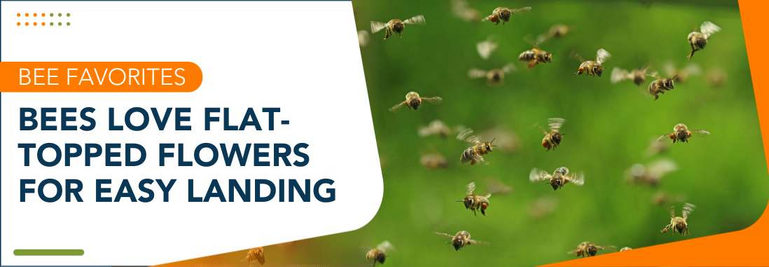
What Plants Attract Bees?
Bees are naturally attracted to certain flowers and plants due to their structure and color. Bees prefer flat-topped flowers for easy landing and are particularly drawn to blooms with prominent stamens. While bees struggle to see the color red, they easily detect blues and purples. Below is a list of plants that are highly attractive to bees:
Plant Type | Examples |
|---|---|
Herbs | Basil, Lavender, Mint, Rosemary, Sage, Thyme |
Trees | Cherry tree, Locust tree, Pear tree, Plum tree, Willow |
Flowers | Aster, Cosmos, Gaillardia, Geranium, Monarda (wild bergamot), Sunflower, Zinnia |
Wildflowers | Joe-pye weed, Goldenrod, Paint brush, Verbena, Wallflower, Wild rose |
Others | Allium, Bee plant, Borage, Clematis, Globe thistle, Hyssop, Giant hyssop, Lupine, Mullein, Poppy, Yarrow |
These plants provide bees with accessible pollen and nectar, contributing to a bee-friendly garden.
Is It Safe to Have Bees and Other Pollinators in My Yard?
Absolutely, welcoming bees and other pollinators into your yard is a great idea! Although there's a slight chance of being stung if bees feel threatened, they're generally not looking to bother anyone while they're busy collecting nectar and pollen. By inviting these hardworking critters into your space, you're playing a crucial role in nurturing their communities and boosting the health of our environment.
Are There Any Pollinator-Friendly Weeds I Shouldn't Remove From My Garden?
Certain "weeds" like clover, dandelion, and milkweed are actually beneficial for pollinators, providing essential nectar and pollen sources early and late in the season when other flowers may not be available. Before removing weeds, consider whether they could serve as valuable food sources for pollinators in your garden.

Oh, and One Last Thing
One last thing, and this is important.
You need to make sure you use local plants.
If you use invasive species, they could actually be harmful to the local wildlife and insect populations.Find plants that bees in your neighborhood are accustomed to, and go with them.
So, What’s the Buzzin’ Line?
Attracting pollinators, and establishing an environment for them, is something we collectively need to accomplish to help our animal friends. As much as the may “bug us” at times, animals including insects are a critical part of the world we live in.
Without them, we will slowly lose the world as we know it.
Fortunately, there are many easy solutions to correcting this long-standing problem.
----
Which tip was your favorite? Share it with us on Twitter @YourGreenPal
Best of all if you need a lawn care pro to help you implement some of these strategies for attracting pollinators, we can help you connect with 1,000’s of lawn care professionalsacross the nation.



 Share
Share










